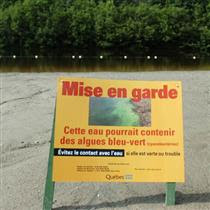Tuesday, 20 March 2007, 00:23 GMT
BBC
 If Himalayan glaciers melt away, rivers like the Indus will disappear |
Its report, World's Top 10 Rivers at Risk, says the river "crisis" rivals climate change in importance.
Five of its "top 10" are in Asia, such as the Yangtse, Mekong, and Ganges, though Europe's Danube and North America's Rio Grande are also included.
WWF says governments should see water as an issue of national security.
Its report is issued in advance of World Water Day (22 March).
Economic and sustainable
"The world is facing a massive freshwater crisis, which has the potential to be every bit as devastating as climate change," said Dr David Tickner, head of the freshwater programme at WWF-UK.
"We need business leaders and governments to recognise that climate change is not the only urgent environmental issue that needs to be dealt with, and that they need to take notice of this freshwater emergency and act now, not later."
Using information from a number of major reports, such as the Millennium Ecosystem Assessment, WWF set out to quantify the overall status of threat to major rivers on which people depend for water and livelihoods.
Dam-building, over-extraction for drinking, industry and agriculture, invasive species, climate change, pollution and shipping were among the various activities whose impact the group assessed.
The principal threats varied widely. The Salween, which flows from Tibet into China, then south along the border between Burma and Thailand, is one of the longest un-dammed rivers in the world.
 Plans to build dams on the Salween have brought protests |
But China, Burma and Thailand have all produced plans to build hydropower dams which activists believe would displace local people who depend on the river for their livelihoods, as well as threatening an area which UNESCO believes may be the most biologically diverse temperate region on Earth.
Biodiversity in Australia's Murray/Darling basin is already compromised by alien species such as the European Carp, which, a mere 30 years after its introduction, now dominates many stretches of the rivers.
Carp create muddy conditions, which blocks photosynthesis.
The main threat to the Indus, meanwhile, is straightforward and linked to climate change. Most of its water comes from Himalayan glaciers; if the glaciers disappear, so will the river.
WWF says governments need to protect rivers better, and ensure water is allocated to users equitably and sustainably, while industries which use a lot of water should seek ways to minimise the amount that they extract.
| RIVERS AT RISK  Map indicates mouths of rivers Source: WWF Rivers at Risk report |






Aucun commentaire:
Publier un commentaire